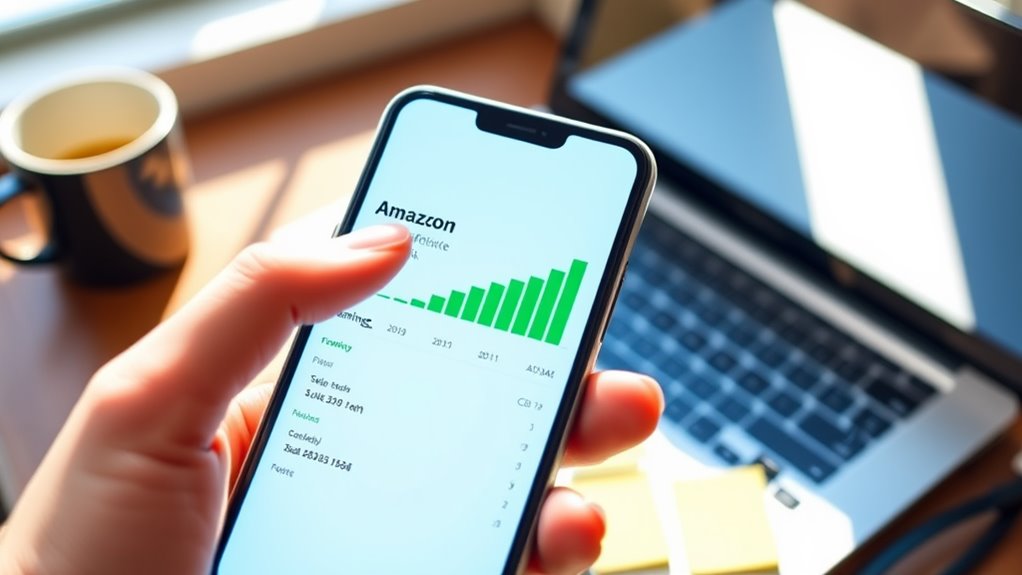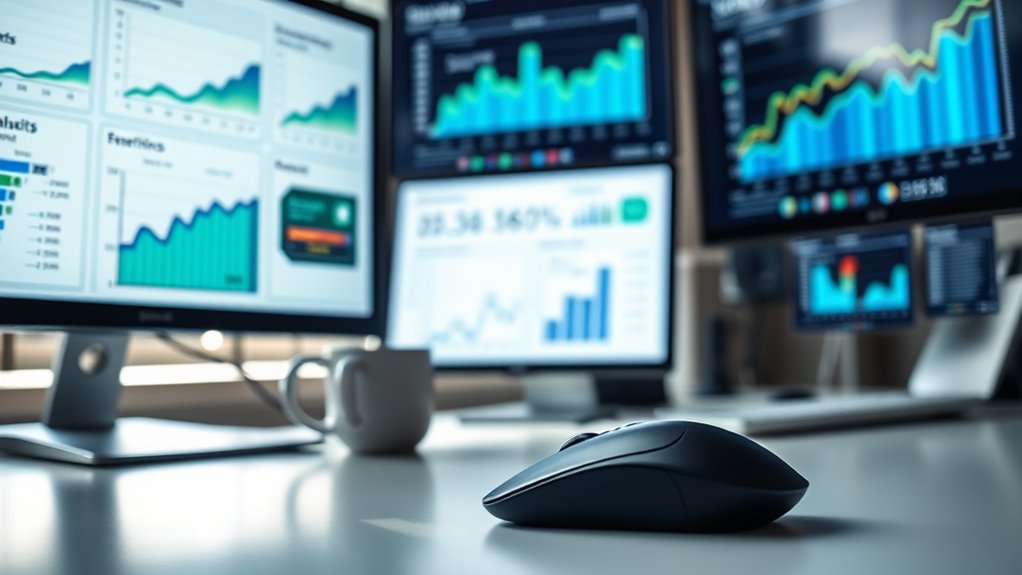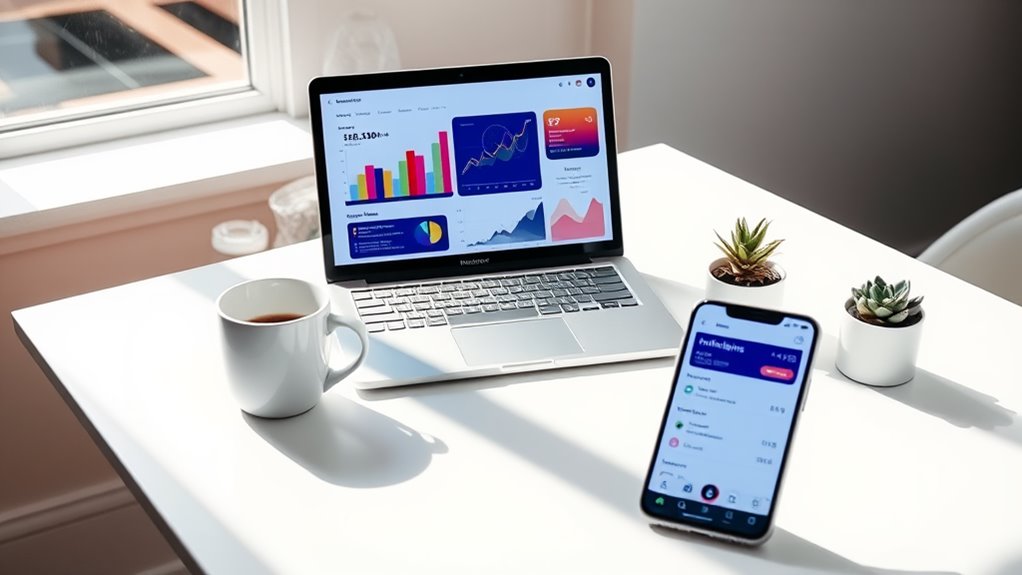Amazon PPC costs typically range from $0.02 to $5.00 per click, with rates varying based on your product category and competition level. You'll find lower costs in categories like Home & Kitchen ($0.40-$0.85 per click), while Electronics command higher rates ($0.75-$1.20 per click). Your actual cost depends on several factors, including keyword relevance, time of day, and your bidding strategy. Most successful sellers maintain an Advertising Cost of Sale (ACoS) between 15-30% for profitability. To keep costs manageable, you'll want to focus on long-tail keywords and implement strategic bidding techniques. Understanding these cost dynamics will help you develop an effective advertising strategy.
Key Takeaway
- Amazon PPC costs typically range from $0.02 to $5.00+ per click, varying significantly based on product category and competition.
- Electronics average $0.75-$1.20 per click, while Home & Kitchen products cost between $0.40-$0.85 per click.
- Luxury and high-competition items can reach $1.50-$2.50 per click, especially during peak seasonal periods.
- Beauty & Personal Care products typically see costs between $0.55-$1.00 per click.
- Most successful campaigns maintain an Advertising Cost of Sale (ACoS) between 15%-30% for profitability.
Understanding Amazon PPC Costs
With Amazon PPC (Pay-Per-Click), advertisers don't pay a fixed rate per click but rather bid against competitors in a dynamic auction system. Your actual cost-per-click (CPC) will vary based on several factors, including your product category, competition level, and seasonal demand.
Key Cost Factors:
- Marketplace competition in your niche
- Product price point and profit margins
- Campaign type (Sponsored Products, Sponsored Brands, or Sponsored Display)
- Keyword relevance and search volume
- Bid strategy optimization
Typical CPC Ranges:
- Low-competition categories: $0.02-$0.30 per click
- Medium-competition categories: $0.30-$1.00 per click
- High-competition categories: $1.00-$5.00+ per click
You'll need to evaluate your Advertising Cost of Sales (ACoS) when determining your maximum bid. A profitable campaign typically maintains an ACoS between 15% and 30%, though this varies by industry. You can start with automatic campaigns to gather data on performing keywords, then shift to manual campaigns for more precise bid control and optimization. Remember, your actual CPC will often be lower than your maximum bid, as you'll only pay $0.01 more than the next highest bidder.
Factors Affecting Click Prices
Several key factors drive Amazon's click prices and can greatly impact your advertising costs. Understanding these elements will help you enhance your PPC strategy and budget more effectively.
Primary Factors Affecting Click Costs:
- Competition Level
- More competitors bidding on same keywords increases costs
- Popular categories like electronics often see higher CPCs
- Seasonal competition spikes during holidays
- Product Category
- Luxury items typically have higher click costs ($1-3+ range)
- Essential goods average lower ($0.30-0.75 per click)
- Niche markets may see varying rates based on demand
- Keyword Relevance
- Broad match terms cost less but convert poorly
- Exact match keywords cost more but target better
- Long-tail keywords often provide better value
- Targeting Parameters
- Time of day affects bid prices
- Geographic targeting can influence costs
- Device-specific targeting impacts rates
Your click costs will also fluctuate based on:
- Historical click-through rates
- Quality of product listings
- Account performance history
- Bid strategy approach
- Placement preferences (top of search vs. product pages)
You'll need to monitor these variables regularly and adjust your strategy to maintain ideal cost efficiency while achieving your advertising goals.
Average Cost By Category
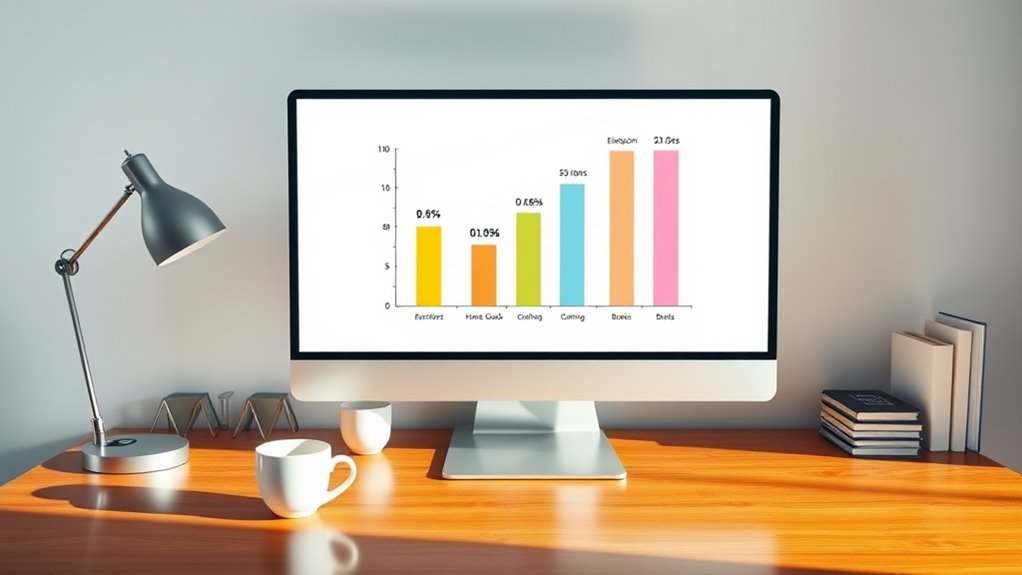
Understanding Amazon's click costs across different product categories helps you benchmark your advertising expenses against industry standards. You'll find significant variations in cost-per-click (CPC) rates depending on your product niche and competition level.
Primary Category Averages:
- Electronics: $0.75 – $1.20 per click
- Home & Kitchen: $0.40 – $0.85 per click
- Beauty & Personal Care: $0.55 – $1.00 per click
- Clothing & Accessories: $0.30 – $0.65 per click
- Books: $0.25 – $0.45 per click
High-Competition Categories:
- Luxury Items: $1.50 – $2.50 per click
- Sports Equipment: $0.90 – $1.40 per click
- Premium Electronics: $1.25 – $2.00 per click
You'll notice that seasonal factors can increase these rates by 20-30% during peak shopping periods. When you're planning your advertising budget, factor in that newer categories typically command higher CPCs due to limited historical data. Additionally, your specific subcategory might deviate from these averages based on factors like search volume and conversion rates. To optimize your spending, you'll want to track category-specific benchmarks and adjust your bids accordingly.
Optimizing Your PPC Budget
Effectively managing your Amazon PPC budget requires a strategic balance between spending and returns. You'll need to monitor key metrics and adjust your campaigns regularly to maximize your advertising ROI.
Key Budget Optimization Strategies:
- Set campaign-specific daily budgets based on product margins
- Start with manual targeting to control spend precision
- Monitor ACoS (Advertising Cost of Sale) and adjust bids accordingly
- Test different bid strategies across campaigns
Optimization Best Practices:
- Begin with modest daily budgets ($25-50) to gather performance data
- Focus on long-tail keywords with lower competition
- Analyze search term reports weekly to identify converting keywords
- Remove underperforming keywords after 2-3 weeks
You'll want to implement dayparting to schedule your ads during peak shopping hours, typically 6 PM to 10 PM in your target market. Structure your campaigns using a tiered approach:
- Top performers: 50% of budget
- Medium performers: 30% of budget
- Experimental campaigns: 20% of budget
Remember to adjust your bids seasonally, increasing them during high-traffic periods like Prime Day or Black Friday when competition intensifies.
Bidding Strategies That Work
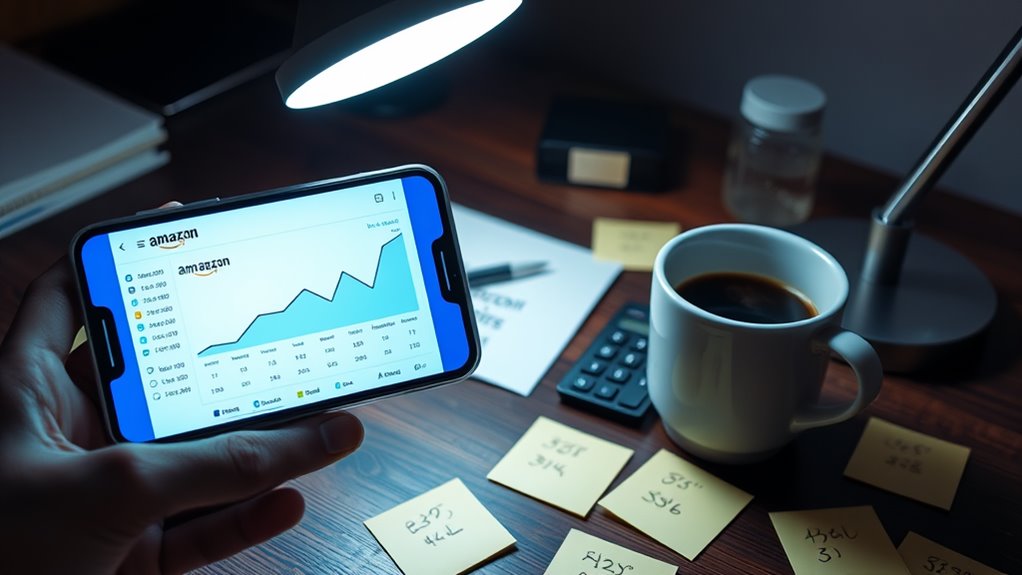
Successful Amazon PPC bidding strategies combine data-driven decisions with dynamic bid adjustments to enhance your campaign's performance. You'll need to master several key approaches to refine your spending and boost your ROI.
Key Bidding Strategies:
- Start Conservative: Begin with bids between $0.50 and $1.00, then adjust based on performance data
- Dynamic Bid-Down: Lower bids for keywords that aren't converting after 1,000 impressions
- Dayparting: Increase bids during peak shopping hours (typically 6 PM – 10 PM)
- Position-Based Bidding: Target positions 2-4 for superior cost-efficiency
Advanced Tactics:
- Rule-Based Automation: Set up automatic bid adjustments when ACoS exceeds 25%
- Long-Tail Targeting: Bid higher on specific, conversion-ready phrases
- Category-Specific Adjustment: Modify bids based on product category performance trends
You'll want to monitor these key metrics:
- Click-through rate (CTR)
- Advertising cost of sale (ACoS)
- Conversion rate
- Impression share
Remember to review and adjust your bidding strategy every 7-14 days, focusing on keywords that generate at least 10 clicks. This systematic approach guarantees you're maximizing your advertising budget while maintaining profitable campaigns.
Conclusion
You've got the tools to master Amazon PPC, and now it's time to put them into action. While costs per click can range from $0.02 to over $6, depending on your category and competition, you'll find success by regularly monitoring your metrics and adjusting your strategy. Remember, it's not just about how much you spend, but how smartly you invest in reaching your ideal customers through strategic bidding and optimization.

